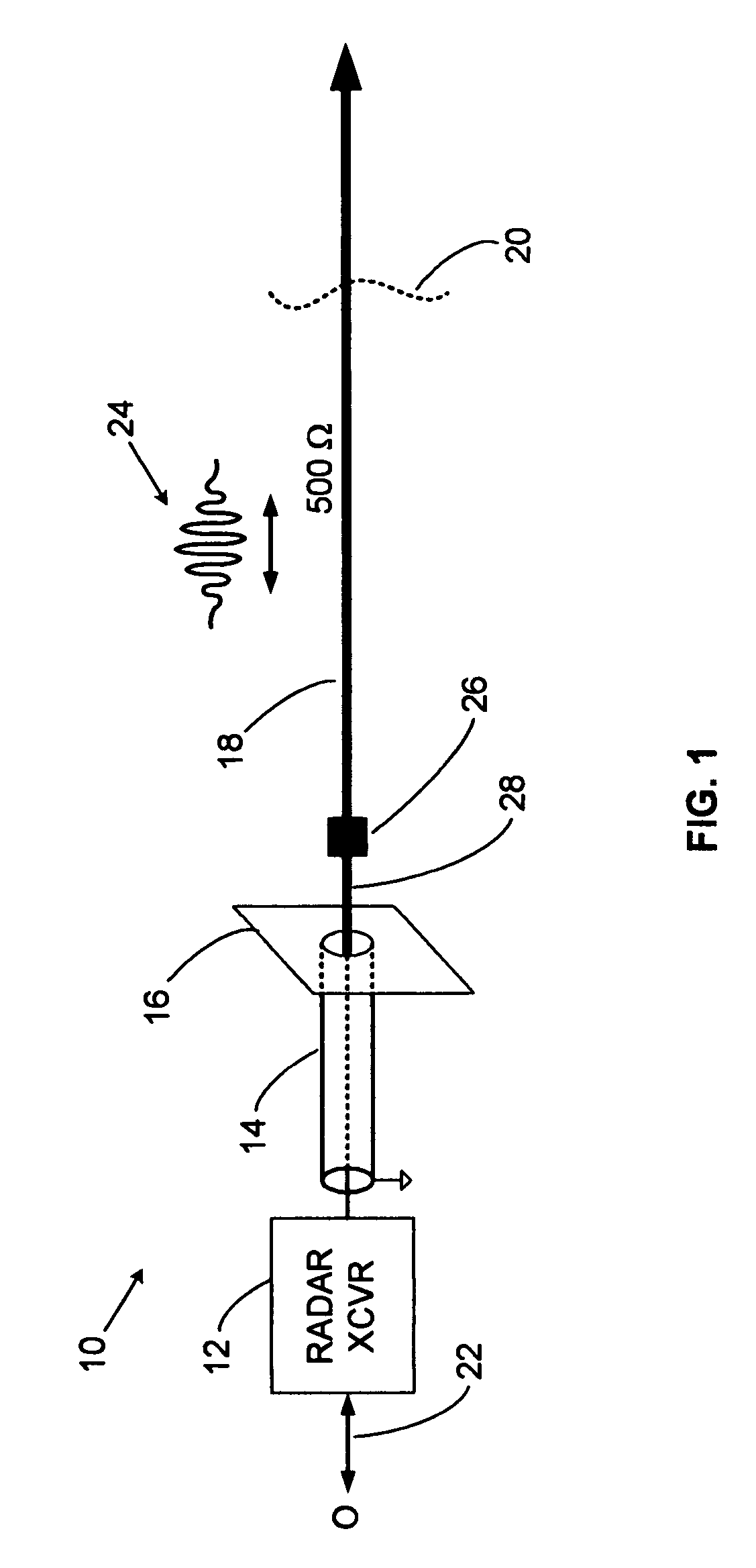Reflection free launcher for electromagnetic guide wire
a launcher and electromagnetic guide wire technology, applied in the direction of instruments, machines/engines, using reradiation, etc., can solve the problems of obscuring the desired short-range echoes, casting reflections from the aperture, and being too large for many practical applications, so as to achieve compact size and easy measurement of short-range echoes
- Summary
- Abstract
- Description
- Claims
- Application Information
AI Technical Summary
Benefits of technology
Problems solved by technology
Method used
Image
Examples
Embodiment Construction
[0033]A detailed description of the present invention is provided below with reference to the figures. While illustrative component values and circuit parameters are given, other embodiments can be constructed with other component values and circuit parameters. All U.S. Patents and copending U.S. applications cited herein are herein incorporated by reference.
General Description
[0034]The present invention overcomes the limitations of the various prior guided wave radar launchers by including an impedance matching element based on reflection techniques. In contrast, prior impedance matching techniques include (1) absorptive matching using resistors, as seen in the above-cited '059 patent to McEwan, and (2) distributed transformer matching using a horn or blades, as seen in the above-cited Goubau, Ross and McEwan patents. Reflection matching is based on creating a matching reflection of equal magnitude and opposite phase to cancel the unwanted reflection produced by the launcher impeda...
PUM
 Login to View More
Login to View More Abstract
Description
Claims
Application Information
 Login to View More
Login to View More - R&D
- Intellectual Property
- Life Sciences
- Materials
- Tech Scout
- Unparalleled Data Quality
- Higher Quality Content
- 60% Fewer Hallucinations
Browse by: Latest US Patents, China's latest patents, Technical Efficacy Thesaurus, Application Domain, Technology Topic, Popular Technical Reports.
© 2025 PatSnap. All rights reserved.Legal|Privacy policy|Modern Slavery Act Transparency Statement|Sitemap|About US| Contact US: help@patsnap.com



